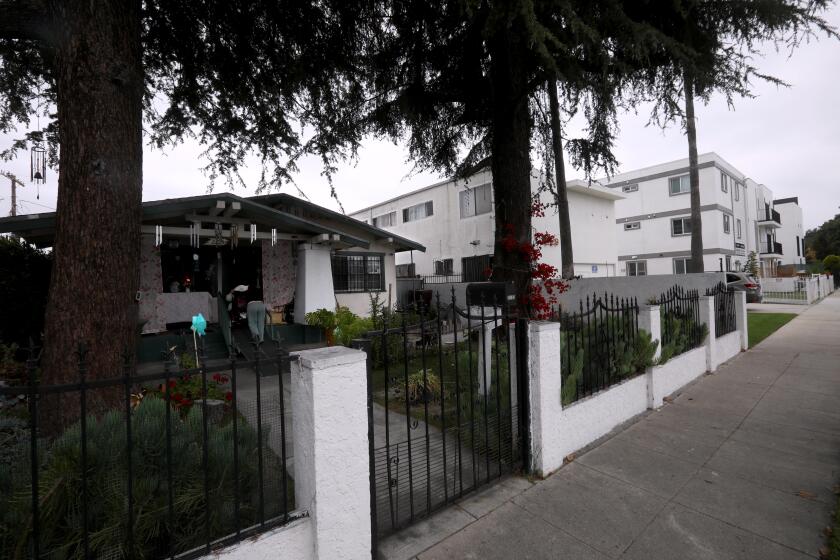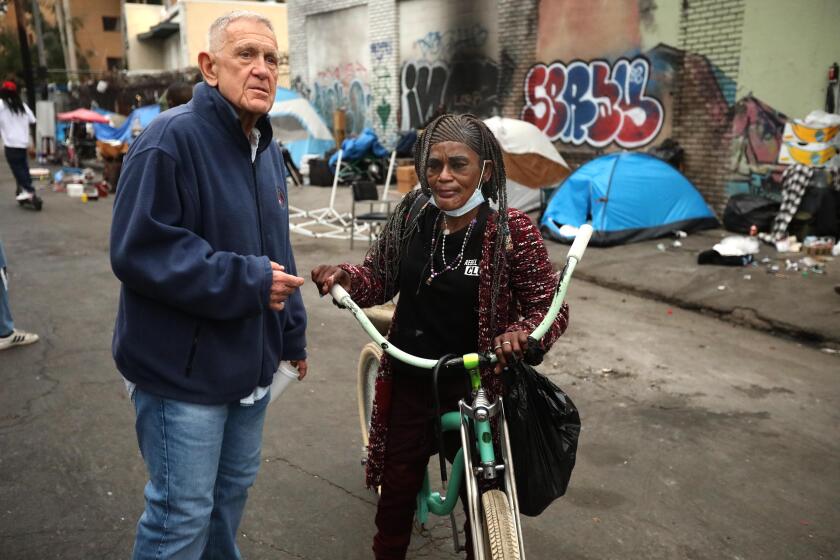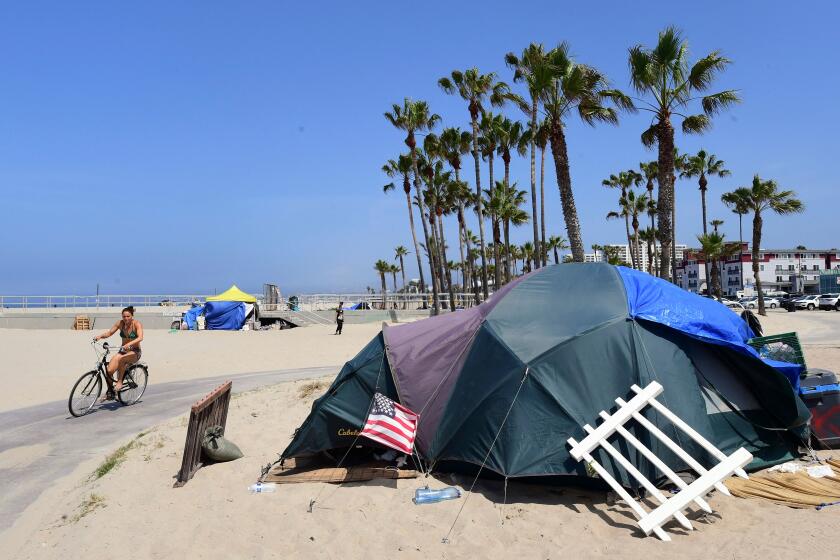Scant Evidence of Squatters Found in River-Bottom Search
Picking his way among the tangle of tree branches, towering shrubbery and wild grasses along the Ventura River bottom, Ventura Police Officer John Castellanos spent Friday morning searching for homeless encampments.
“This is just meant to be a scouting expedition,” Castellanos said as he toted a shotgun along a brush-covered trail. “In the coming weeks we’ll be back though.”
Evicting homeless squatters from the dry riverbed has become almost as perennial as the mustard grass that colors the river’s banks.
But the place has changed since the flood of January 1995 washed out the squatters’ camp that had grown to more than 100 men, women and children. Along with the flood came a flood of disaster aid and a coordinated effort by city officials to deal with the homeless problem.
On Friday, Castellanos and a team of three other police officers, a park ranger, an animal control officer, two volunteers and a Ventura County Sheriff’s Department helicopter crew spent several hours and turned up only a handful of encampments.
They found crude clearings camouflaged by brush and covered with old cushions, soiled clothes and blankets.
“It’s nothing like it was,” said Ventura Police Officer Jeff Killion, standing next to the clean running river. “It’s much nicer down here now.”
In the afternoon, the same team trekked along the Santa Clara River bottom looking for encampments. The animal control officer trudged along in case the team discovered wild dogs, which had been a problem in the past.
Before the flood, the encampments in the Ventura River bottom--that dated back to the Depression--resembled an open-air ghetto and, from a distance, made the area look like a dump.
*
Bob Costello, executive director of the Homeless Emergency Relocation Operation, also known as the HERO project, said the coordinated city efforts and an array of services offered to help homeless people find jobs and housing means that fewer people feel compelled to live in the river bottom.
“I just think there are a lot of people that are tired of that lifestyle,” said Costello, who spent five years before the floods working in the river bottom with the homeless population. “And now they have a choice where maybe they didn’t before.”
He said the periodic sweeps are a good thing.
“I don’t think these are meant to be punitive,” Costello said. “The police are just trying to clean out something that people want to keep clean.”
Since the 1995 flood--which drowned one homeless man who was living along the Ventura River and sent authorities scrambling to rescue many others--the city has passed an ordinance making it illegal to camp in the river bottom, and conducted several cleanup sessions there.
Also since the flood, volunteers and park service personnel have spent hundreds of hours not only clearing out debris but also uprooting invasive vegetation and planting native species. Now, between the Ventura Freeway overpass and the ocean lies a 110-acre mini-park along the estuary.
But both police and homeless advocates said a core of homeless people would probably always choose to live in their homemade camps in the river bottom.
After coming upon a small dome tent in a clearing looking out on the clear blue-green river water, Castellanos said even after the team returns to clear it out, some people will likely continue to come back.
“I don’t think we’ll ever clear out everybody,” he said.



